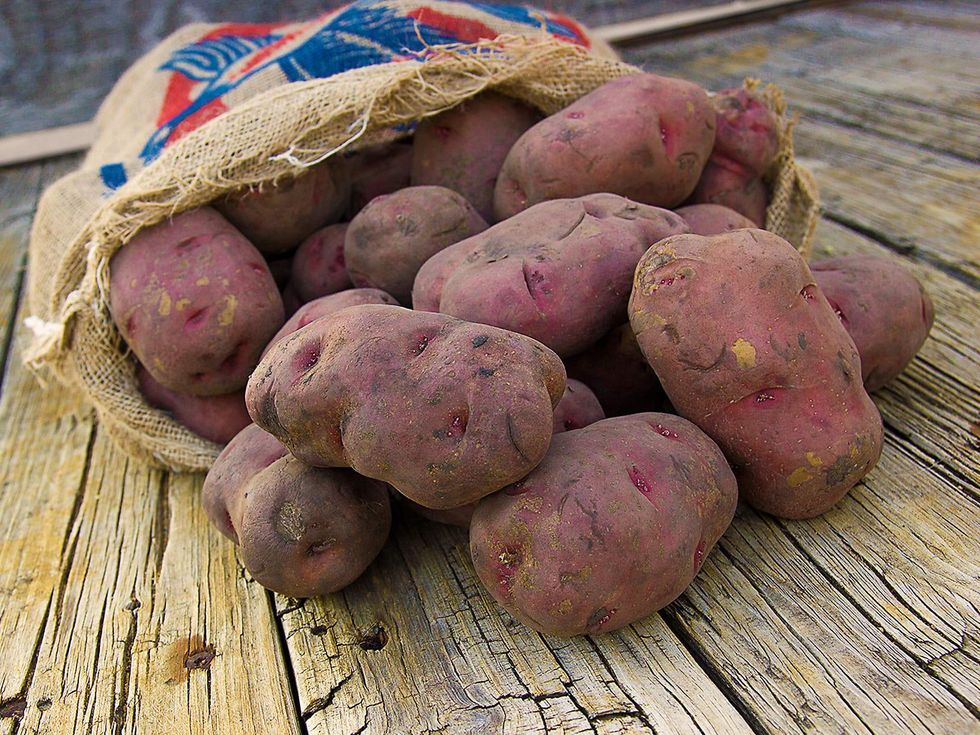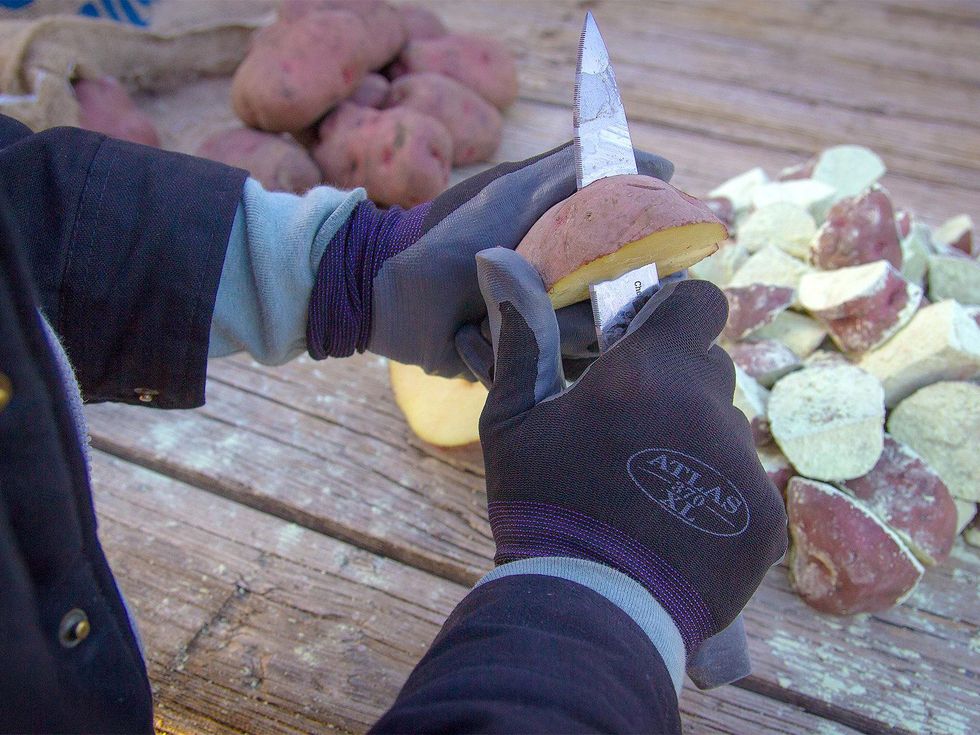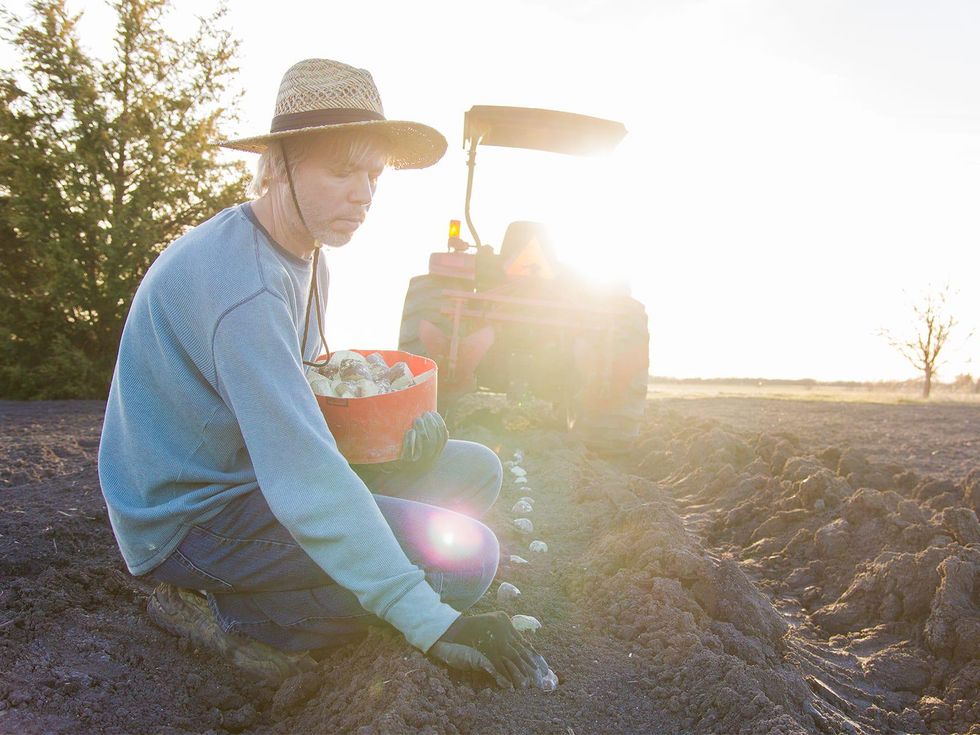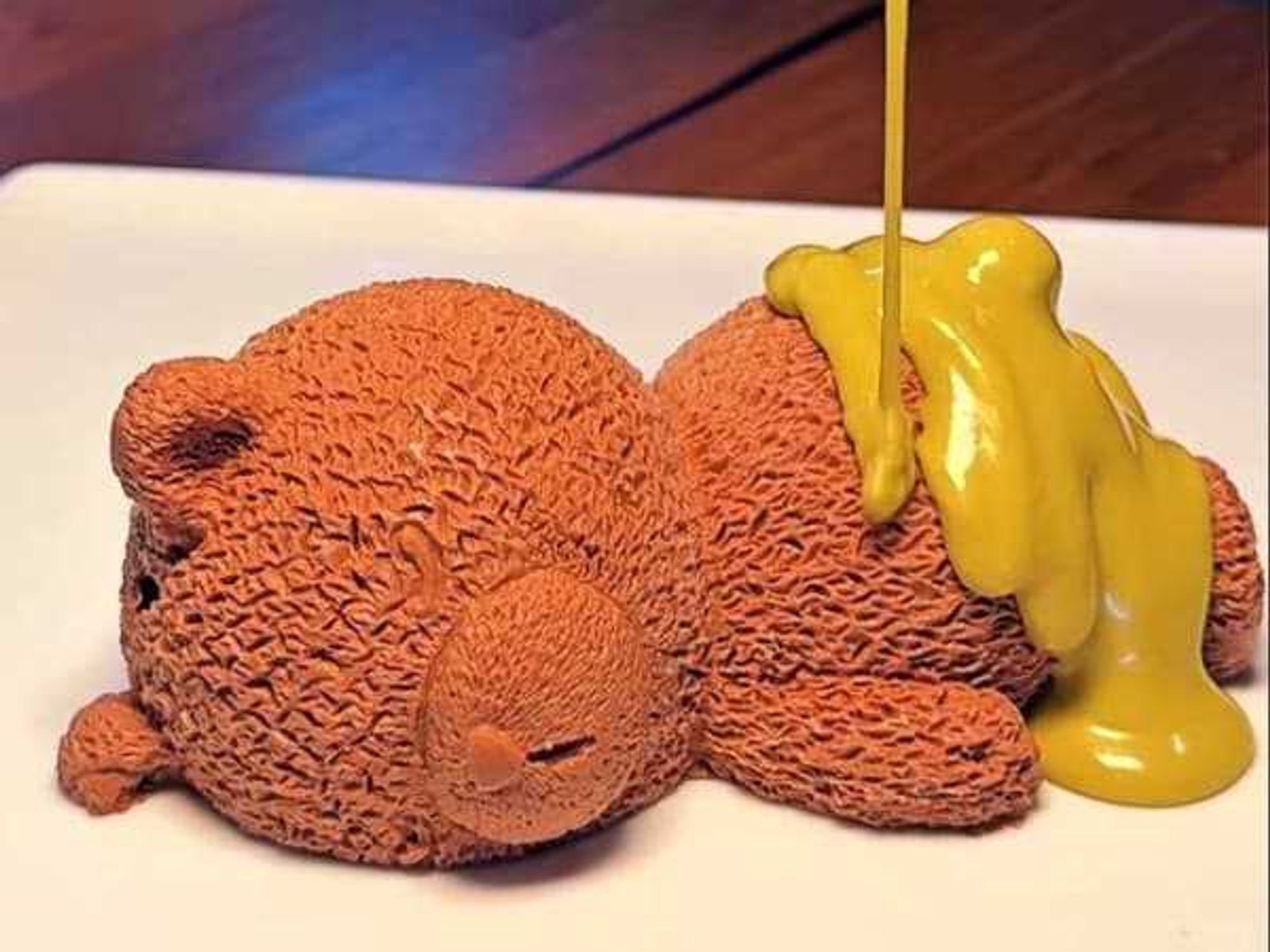The Farmer Diaries
Undeterred by previous failures, Texas farmer gives potatoes another shot
Potatoes are an easy crop to grow if you know the secret. I do not know that secret. Every year I plant potatoes, and every year I would have been better off eating the seed potatoes rather than planting them.
In some years, I harvest about a fourth of the amount I planted. Sometimes I get nothing — not even a marble-sized new potato.
For me this is all a shame, because if I will ever realize my goal of opting out of industrial agriculture and declaring food independence, I must have a decent showing of spuds. Fried, baked, roasted, steamed or mashed, they're part of more than half the meals I eat.
I'm returning to the traditional "hilled row" method. It requires a little extra digging, but it has proved to be the surest way to grow potatoes.
So, once again, I will plant them. But no longer will I fall for the hype of "growing potatoes without all the work," i.e. using a trash can, tub or plastic bag. Instead, I'm returning to the traditional "hilled row" method. It requires a little extra digging, but it has proved over centuries to be the surest way to grow potatoes.
Potatoes require cooler temperatures during the three-and-a-half months they need to grow. In Texas, that means planting by mid-February, so they're ready for harvest in June, right before summer heat.
To grow potatoes, you use potatoes. Red potatoes are purported to do better in the state than any other variety, so my father picked up a 50-pound bag of Red La Soda seed potatoes from a feed store at the first of February. It's unwise to use potatoes from the grocery store, because they're artificially forced into dormancy and do not grow well.
A day or two before they're planted, each seed potato must be cut into golf ball-sized chunks, with at least two eyes per piece. The eyes of a potato are the eye-shaped dimples here and there on the skin, each with a small outgrowth at the center.
Most of the seed potatoes in our bag were the size of an elongated softball and had about eight eyes each. I was able to cut each potato into about four pieces, helping spread out the seed potato investment a little. Some potatoes were a little smaller than a baseball; I left those whole.
I then dipped each of the pieces in powdered sulfur. The sulfur not only helps prevent the pieces from rotting, but it also adds to the acidity of the soil and nourishes the new plant. Once the potatoes are all cut up and dipped, I let them cure indoors for two days before planting them. Curing allows the freshly cut chunks to dry up a little, thus making the seed less susceptible to pathogens.
My father tilled a nearby field several times this winter, so the tilth of the soil was perfect for planting. All that was left for me to do was to make hilled rows where the potatoes were to be planted. I attached a plow on the back of our tractor with two blades spaced about three feet apart. I then plowed the field, making two deep trenches a foot deep and 300 feet long.
In Texas, plant potatoes by mid-February, so they're ready for harvest in June, right before summer heat.
This formed a 2-foot-wide hill of soil in the middle of the trenches. Such a long row with deep trenches on either side forms a sort of "raised bed." It allows rainwater to drain from the center of the hill so the soil does not become saturated. Without good drainage, potatoes will rot in Texas soils.
Once the rows were made, I amended them with sulfur, soft rock phosphate and Sul-Po-Mag. The latter adds more sulfur along with potassium and magnesium — all important minerals for root crops — but not nitrogen. Nitrogen triggers vegetative growth above the soil, which is the opposite of what we intend with potatoes.
To plant, I dropped the seed potato pieces along the row, spaced a foot apart with the eyes facing upward because they are what grow into stalks. To cover them, I made another pass with the plow, set a little deeper to stir up more soil onto the hill in the center and thus covering the pieces. In a few weeks, potato stalks should begin to pop up from the hill and flesh out into bush plants.
When they reach 6 inches tall, I'll use a hoe and pull up more soil from the trenches to cover up the plant, leaving two inches of growth showing through the top. This practice of hilling the potatoes keeps light from reaching the tubers that are forming underground, which would turn them green, bitter and noxious. The enlarged hill also promotes the growth of small tubers, or new potatoes, in the upper level of soil.
Just to see which works better, I also planted a raised bed of potatoes. In a 4-by-8-foot bed, I turned the soil with a spade fork to improve its tilth and uproot a few winter weeds. I then mixed in the same minerals as I did with the hilled rows.
Then I drew lines in the soil with a hoe so that each square foot was marked out. I placed a seed potato piece in each square, 32 in all, and covered the whole bed in three inches of soil mixed with compost.
By mid-March, when we reach the average last frost date in Dallas and Austin, the potatoes should just be beginning to crop up. I will not water the hilled rows, because I plan to save my tanks of rainwater for more promising crops that I know will do well. With good rainfall, though, the potatoes will continue to grow through April and May until the first of June, when the plants turn yellow and begin to die. At that point, they're ready to be harvested.
To harvest the potatoes, I'll gently dig through the soil under each plant with a fork spade and pry up as many potatoes as I can find. Then I'll dig a little deeper and find the massive tubers well below. At least, that's the plan.




